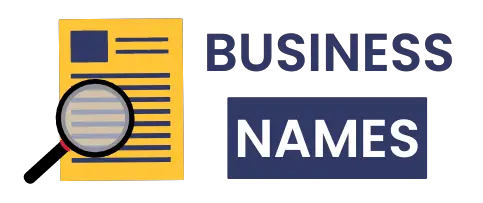This year’s biggest financial myth is the “soft landing” in 2025. It’s a comforting tale where inflation disappears and everyone keeps their job, but it ignores the hard data.
The warning signs are flashing red, pointing not to a gentle slowdown but to a painful recession. We’ll deconstruct this official story and expose the real risks hidden in the numbers, from the breaking American consumer to a fragile labor market.
This is the practical playbook for protecting your money when the official forecast is a fragile hope, not a sound strategy.
Deconstructing the Myth of the Flawless Landing
Fed Rate Hikes: The Historical Track Record
History shows that when the Federal Reserve raises interest rates to fight inflation, a recession (a “hard landing”) is the most common outcome.
Out of the last 12 rate hike cycles, 11 were followed by a recession.
1994 vs. 2025: Why This Time Is Different
- Fed Stance: Proactive Acted *before* inflation became a problem.
- Inflation: Low & Stable Fed “tapped the brakes” to prevent overheating.
- Job Market: Strengthening Economy was robust with falling unemployment.
- Fed Stance: Reactive Acting *after* inflation hit a 40-year high.
- Inflation: Historic High Fed “slammed the brakes” to cool a crisis.
- Job Market: Showing Weakness Economy is cooling with rising warning signs.
“Fixing high inflation is almost never easy. Believing the Fed can pull off a perfect soft landing… isn’t a smart bet. It’s a leap of faith.”

The Seductive, and Exceedingly Rare, Soft Landing
You hear the term “soft landing” a lot in the news. It sounds good, and it’s a convenient phrase for politicians. Think of it like a pilot landing a plane perfectly in bad weather. A soft landing is when the government slows down a hot economy without causing a recession.
The goal is to cool things down just enough to stop prices from rising too fast, but not so much that people lose their jobs. It’s the perfect outcome everyone in charge is hoping for in 2025. But if you look at history and the facts, it’s a dangerous story.
To see why everyone is so focused on this idea, you have to look back at the one time it actually worked: 1994-1995. The Federal Reserve, led by Alan Greenspan, raised interest rates to cool down the economy. At the time, the economy was strong. The unemployment rate was dropping, and inflation was low. The Fed acted before a problem started. They saw the economy might get too hot and gently tapped the brakes.
It worked perfectly. The economy slowed down, prices stayed stable, and there was no recession. This set up the huge economic boom of the late 1990s. One former Fed official called it the “perfect soft landing that helped make Alan Greenspan a central banking legend.”
That one success story has made policymakers hopeful ever since. But using it as a model for 2025 is a big mistake. The situation today is completely different. Back then, the Fed acted ahead of time from a strong position. Today, the Fed is reacting to a problem that already happened. They had to slam on the brakes after inflation hit a 40-year high. The job market isn’t getting stronger; it’s showing signs of weakness. People who push the soft landing story ignore this.
The truth is, when the Fed raises rates, it usually ends in a recession. Looking at the last 12 times they’ve raised rates, 11 of them were followed by a recession. A better comparison is what Fed Chairman Paul Volcker did in the early 1980s. He faced runaway inflation and knew small fixes wouldn’t work. He raised interest rates so high that he caused a bad recession to finally get prices under control.
Volcker’s “hard landing” was tough, but it worked. It created the price stability that allowed the economy to grow for decades. History shows that fixing high inflation is almost never easy. Believing the Fed can pull off a perfect soft landing today, from a much worse starting point, isn’t a smart bet. It’s a leap of faith.
The Official Story: A Tapestry of Hope and Contradiction

The official forecast for 2025 from the big economic groups is cautiously positive. They say the economy will slow down but not crash, inflation will cool, and the world will keep growing. The International Monetary Fund (IMF) expects global growth to be 3.0% in 2025. The Organisation for Economic Co-operation and Development (OECD) predicts 3.2%. The World Bank is a bit more cautious at 2.3%, but still doesn’t see a global recession.
Here in the U.S., the Federal Reserve’s own numbers suggest a controlled slowdown. They predict U.S. GDP growth of 1.6% in 2025, with unemployment rising only a little to 4.5%. This is the soft landing story in numbers: the economy cools just enough to fix inflation without causing mass layoffs. Most economists agree, with the chances of a recession now seen as less than 50%.
But if you read the fine print in these reports, you see a lot of worry. The words they use aren’t confident. The IMF calls the economy’s situation “tenuous resilience amid persistent uncertainty.” The OECD warns that “downside risks loom large.” This is how big institutions cover themselves. They give a positive main forecast to keep markets calm, but the real story is in the list of risks they mention.
These aren’t small problems. They are big threats that could wreck the whole forecast. They include:
- Trade Fights: The threat of higher taxes on imported goods (tariffs) is a major worry. It could slow down business investment and mess up supply chains. Goldman Sachs, for example, lowered its U.S. growth forecast because of tariffs.
- Global Conflicts: Wars and instability around the world disrupt trade and can cause sudden price shocks.
- Government Debt: Global government debt is set to hit 100% of the world’s total economic output by 2029. This is the highest it’s been since World War II. It means many countries can’t afford to handle another crisis.
- Stubborn Inflation: While overall inflation has dropped, the cost of services is still rising quickly in the U.S. and other places. This could force central banks to keep interest rates high, which might accidentally push the economy into a recession.
The gap between the positive headlines and the serious warnings tells the real story. The official forecast is a best-case scenario where none of these big risks cause a problem. It assumes trade wars will cool down and conflicts will stay contained. This isn’t a realistic view of the world; it’s a fragile hope. The “lie” of the soft landing is that this best-case scenario is presented as the most likely one, while the more probable, painful outcomes are hidden in the details. The table below shows the difference between the official story and what the data is really telling us.
| Economic Indicator | Mainstream 2025 Forecast (The “Official Story”) | Contrarian Indicators (The “Ground Truth”) |
| Real GDP Growth (U.S.) | Slowing but positive, ~1.6-1.8% | Stalling job growth, bond market warnings, weak company profits |
| Unemployment Rate | Small rise to ~4.5% | Over half of industries are cutting jobs, more long-term unemployment |
| Consumer Health | “Resilient,” helped by wage growth | Record household debt ($18.39T), more people missing credit card & auto loan payments |
| Recession Probability | Below 50% and falling | J.P. Morgan’s 40% probability, history of rate hikes causing recessions |
| Global Environment | Slow growth, easing inflation | Major uncertainty from tariffs, global conflicts, and slowing trade |
The Data Doesn’t Lie: Reading the Warning Signs of a Hard Landing

The American Consumer is Breaking
The idea of the “resilient American consumer” has been the main reason people believe in a soft landing. Experts point to people still spending money as proof that households can handle higher prices and interest rates. Federal Reserve officials talk about a “strong but choosier consumer.” But this view only looks at the surface.
The truth is, people aren’t spending because they’re earning more. They’re spending because they’re taking on a huge amount of debt. The American consumer isn’t strong; they are stretched thin, and we’re starting to see the first signs of trouble.
The amount of debt is huge. As of mid-2025, total U.S. household debt hit a record $18.39 trillion. That’s more than the peak right before the 2008 financial crisis. The most worrying part is the growth in high-interest debt. Credit card balances have jumped to $1.21 trillion, and auto loans have hit $1.66 trillion. This is the kind of debt that gets dangerous in a bad economy. Credit card rates go up when the Fed raises its rates, which squeezes family budgets even more.
For a while, this debt-fueled spending can make the economy look healthy. But that illusion is starting to break. We’re seeing more people fall behind on their payments. The overall delinquency rate for household debt rose to 4.4% in mid-2025. The number of people seriously behind on their credit card and auto loans is rising, especially for younger people.
Even more alarming, student loan delinquencies are shooting up. With pandemic payment pauses over, a shocking 10.2% of the $1.64 trillion in student loans were seriously delinquent. This shows that a large group of people are in deep financial trouble, which means they will have to cut back on spending.
This shows the economy’s biggest weak spot. The consumer is not a source of strength but a potential breaking point. With so much debt, families can’t handle another shock. If the job market slows down, it will set off a chain reaction. A lost job for a family with a lot of high-interest debt means they’ll start missing payments. When defaults rise, banks will make it harder for everyone to borrow money. This credit crunch will force even more people to cut spending, which hurts company profits and leads to more layoffs. The “resilient consumer” story ignores this fragile setup. The data shows a consumer who is brittle and ready to break.
The Labor Market’s False Front
If the consumer is the weak spot, the labor market is the most misunderstood part of the economy. People who believe in a soft landing point to the low unemployment rate—a steady 4.3% as of August 2025—as proof of a strong economy. They say this gives the Federal Reserve plenty of room to slow things down without causing a recession.
But focusing on that one number is like driving while looking in the rearview mirror. The unemployment rate is a lagging indicator; it’s one of the last things to get worse in a recession. If you look at the data that predicts the future, you’ll see a job market that is getting weaker under the surface.
The biggest warning sign is in the payroll numbers. According to one economist, payroll employment is the most important number used to officially declare a recession. If that number goes down for more than a month, it’s a clear sign a recession has started. While the numbers aren’t negative yet, they’ve stopped growing. In August 2025, job growth was almost zero, and it’s been flat since April. Also, recent reports have been revised down, which suggests the first numbers were too positive.
This weakness is everywhere. The second red flag is how widespread the slowdown is. As of July 2025, more than 53% of the 400 industries that economists track were cutting jobs. In the past, this has been a reliable sign that a recession is already happening. The economy is being held up by just a few sectors that aren’t affected by the business cycle, like healthcare and social assistance. These areas are hiding a big slowdown in the rest of the private sector.
This is a classic late-cycle pattern that is being misread as strength. Other signs confirm the problem. The number of people who have been unemployed for a long time has gone up, meaning it’s harder to find a new job. A broader measure of unemployment that includes people who have given up looking for work has also been rising. And a recent survey found that workers’ hopes of finding a new job have fallen to the lowest point since 2013. The story of a strong labor market is a myth built on one late-to-the-party number. The real data tells a different story: a market that is quickly losing steam. By the time the main unemployment rate starts to shoot up, the recession won’t be a risk; it will be a reality.
The Canary in the Coal Mine: What the Bond Market and Corporate Profits Are Screaming
While the consumer and job markets show us what’s happening now, two other indicators have a long history of predicting the future: the U.S. Treasury yield curve and company profits. For over a year, both of these have been signaling danger. Their message is clear and has been right in the past: a recession is coming.
First, look at the bond market’s warning. A “yield curve inversion” happens when the interest rate on a short-term government bond is higher than the rate on a long-term one. This is not normal. It means investors believe the economy will be so weak in the future that the Federal Reserve will have to slash interest rates to save it. An inverted yield curve has come before every U.S. recession for the last 50 years. The inversion that started in 2022 was the longest and one of the deepest in over 35 years. It was a huge vote of no confidence from the smartest investors in the world.
Now, the curve has gone back to normal, but this is not an “all-clear” signal. History shows the recession often starts after the curve returns to normal. This is the final stage of the warning, when the market stops just predicting a slowdown and starts seeing it happen in the data. We are in that phase now.
The second warning is from corporate profits. Company profits are the fuel for the economy. They drive hiring and investment. When profits stop growing or start to fall, it’s a clear sign that people are spending less and business costs are rising. The latest data shows this is already happening. After falling in the first quarter of 2025, corporate profits were basically flat in the second quarter. This profit squeeze is happening because of higher tariffs and weaker consumer spending.
You can see this pressure in what company executives are saying. All year, experts have had to lower their expectations for how much companies will earn. This isn’t just a random set of bad numbers. It’s the logical way an economic cycle ends. The Fed’s rate hikes inverted the yield curve, signaling a future slowdown. That slowdown is now hitting company profits. The last domino to fall is the job market, as companies with shrinking profits eventually have to start laying people off. The data isn’t just pointing to a risk of recession; it’s showing the classic path to one.
My Personal Playbook for the Coming Storm

Knowing the economy is in trouble is only half the battle. You need a plan. Believing a hard landing is coming isn’t a reason to panic. It’s a reason to be careful. It means you need to change how you manage your money and how you invest. You need to shift from taking risks to protecting what you have. The next sections will show you my personal playbook—the exact steps I’m taking to make my finances stronger and change my portfolio for the storm I see coming. This isn’t about timing the market, which is impossible. It’s about getting ready for a rough period so I can get through it and come out stronger on the other side.
Fortifying the Foundation: Non-Negotiable Personal Finance Moves
Before you think about investing, you have to make sure your personal finances are solid. A strong household budget is more important than your portfolio. It doesn’t matter if your investments are set up to handle a market crash if a job loss forces you to sell everything at the worst possible time. So, the first and most important step is to build a financial fortress.
First, build a fortress of cash. When things are uncertain, cash gives you safety and options. Your main goal should be to build an emergency fund that is much bigger than the usual three-to-six months of expenses. I’m aiming for at least 12 months of essential living costs. This means rent or mortgage, utilities, food, and minimum debt payments—no extras. I keep this money in high-yield savings accounts and short-term government bills so it’s safe and easy to get to. This does two things: it protects me if I lose my job, and it gives me money to invest when prices are low and everyone else is forced to sell.
Second, attack high-interest debt with extreme prejudice. Having credit card debt in a recession is a huge mistake. As interest rates stay high, the cost of that debt eats up your cash. Paying it off is a top priority. When you pay off a credit card, you get a guaranteed return equal to the interest rate, which is a great deal in a shaky market. Getting rid of these payments frees up cash and makes you more financially secure.
Third, optimize and protect your credit score. When the economy is good, it’s easy to get credit. In a recession, it gets much harder. A high credit score (740 or above) is a lifeline. It means you can still get a loan if you absolutely need one, and at a good rate. This isn’t about planning to take on more debt; it’s about keeping your options open. The steps are simple: pay every bill on time, keep your credit card balances low, and don’t open new credit cards you don’t need.
These steps aren’t just about surviving. They are smart moves that put you in control. If you have a year of cash, little debt, and a great credit score, you’re not a victim of a recession. You’re an opportunist. You are protected from the worst of the shock and ready to invest when others are fearful.
The Resilient Portfolio: My Core Asset Allocation Strategy

Once your personal finances are secure, you can focus on your investments. The main goal now changes completely. In a good market, you want to maximize your returns. In the period before a recession, the main goal is capital preservation. This doesn’t mean selling everything and hiding your money under the mattress. It means taking less risk and moving money from investments that do well in a growing economy to ones that provide safety and income.
The first move is a big shift to cash and high-quality government bonds. Part of this is my 12-month emergency fund. On top of that, I’m increasing the amount of short- and medium-term U.S. Treasury bonds in my investment portfolio. When markets are in crisis, U.S. Treasurys are seen as the ultimate safe asset. They often go up in value when stocks are going down, which helps protect your overall portfolio. I’m also adding Treasury Inflation-Protected Securities (TIPS). These bonds protect you if we get a mix of low growth and high inflation, which is a real risk right now.
The second move is to reduce my exposure to stocks and make it safer. This means I have a smaller percentage of my money in the stock market. More importantly, I’m changing the type of stocks I own. I’m selling stocks that are very sensitive to the economy and speculative growth stocks. I’m moving that money into defensive sectors, which have historically been more stable during recessions. I’m focused on three main areas:
- Consumer Staples: Companies that sell things people always need, like food, drinks, and soap. A company like Altria Group (MO), with its strong brands and history of paying dividends, is a good example.
- Healthcare: People need healthcare no matter what the economy is doing. This includes drug companies, medical device makers, and health insurers.
- Utilities: These companies provide essential services like electricity and gas. Their income is steady and predictable, and they often pay good dividends. A leader like NextEra Energy (NEE) is a good fit.Within these sectors, I’m looking for large, well-known companies with strong finances, a history of steady profits, and a strong competitive advantage.
The third part of my strategy is a dedicated allocation to safe-haven assets, mainly physical gold. While government bonds protect against a deflationary crisis, gold protects against inflation, a falling dollar, and global chaos. It’s a real asset that has been a store of value for thousands of years and exists outside the banking system. It doesn’t move with stocks or bonds, which makes it a great way to diversify in a crisis.
This new portfolio is like a “barbell.” On one end, I have a very safe and liquid position in cash and U.S. Treasurys to protect my money. On the other end, I have a carefully chosen, lower-risk group of high-quality stocks and real assets like gold. This setup is built to handle a wider range of bad economic outcomes than a typical “moderate” portfolio.
Beyond the 60/40: Integrating Alternatives for True Diversification
For a long time, the standard investment portfolio was the 60/40 model: 60% in stocks for growth and 40% in bonds for safety. The idea was that when stocks went down, bonds would go up. But in today’s world of higher inflation, that relationship doesn’t always work. Sometimes stocks and bonds fall at the same time. To build a truly strong portfolio for 2025, you need to look beyond stocks and bonds and add a third piece: alternative investments.
Alternative investments are assets that aren’t stocks, bonds, or cash. They include things like real estate, infrastructure, private credit, and commodities. Their main benefit is that they don’t always move in the same direction as the stock market. The things that drive their value are often different from what moves the S&P 500. A portfolio with these assets is less likely to be wiped out by a stock market crash. My strategy is to add a few of these to spread out my risk even more.
First, Real Estate Investment Trusts (REITs) are an easy way to invest in property. But not all REITs are good in a recession. I’m avoiding things like office buildings and shopping malls, which get hit hard when people lose jobs and stop spending. Instead, I’m focusing on areas that have long-term growth, like data centers (such as Digital Realty Trust, DLR), which are the backbone of the digital world, and healthcare facilities, which have steady demand.
Second, Infrastructure Funds and ETFs let you invest in the essential assets of the economy, like utilities, pipelines, and cell towers. These assets often have stable, predictable income from long-term contracts, which can protect you from inflation. This income is much less shaky than company profits during a downturn.
Third, Private Credit is a way to lend money to businesses, often for a higher interest rate than you can get from public bonds. You can get exposure to this through publicly-traded Business Development Companies (BDCs). This is a riskier area, because a bad recession would cause some businesses to fail. However, the loans are often secured by assets and have floating interest rates, which helps in an inflationary time. A small, carefully chosen investment in high-quality BDCs can add yield and diversification.
Finally, Commodities, in addition to my gold holdings, can protect against inflation caused by supply chain problems. A broad commodity ETF can give you exposure to energy, metals, and agriculture. If we get a period of stagnant growth but rising prices (stagflation), commodities can do well when both stocks and bonds are struggling.
Adding these alternatives is a long-term strategic decision to build a stronger portfolio. It’s a recognition that the next decade will likely have more inflation and more risk than the last one. A portfolio built on the old 60/40 model isn’t ready for this new world. By adding assets with different risk factors, I’m building a portfolio that is better prepared for the coming storm.
Conclusion
The popular story of a 2025 “soft landing” is a nice thought during tough times. It’s a story of smart policy and a strong economy that can handle the fastest interest rate hikes in 40 years. It is also a work of fiction. When you look at the facts, you see an economy full of risks, where history and the data point to a painful recession, not a gentle slowdown.
We’ve seen that the American consumer is not strong, but is drowning in record debt. We’ve seen that the job market is getting weaker under the surface, with job growth stopping in most industries. We’ve seen that the bond market and company profits—two of the most reliable predictors—have been warning of a recession for months. To believe in a soft landing is to believe that this time, against all the evidence, is different.
The playbook in this article is my answer to this reality. It is not a call to panic or to predict a market crash. It is a call to be careful. It is a smart, fact-based plan to shift from taking risks to building resilience. It starts with making your personal finances rock-solid—building up cash, paying off bad debt, and protecting your credit. From that strong base, you can then restructure your investment portfolio. This means taking less risk, owning more safe assets like U.S. Treasurys and gold, focusing your stocks in defensive areas, and adding alternatives to build a stronger portfolio for a new era.
The road ahead will likely be bumpy. To get through it, you need to ignore the hopeful stories and look at the real risks. By seeing these risks and taking smart steps to prepare, you can face the coming downturn not with fear, but with a plan. The goal is to protect your money through the storm and be ready to grab the great opportunities that will appear on the other side.

